Make the most of your Pilates workouts with the versatile and dynamic Pilates bar! This tool can help you achieve a stronger, more flexible, toned body — suitable for all levels. But how do you use it, and how does it work?
In this blog, we will break down the basics, benefits, and techniques to ensure you have a solid foundation. From understanding the different types to mastering ideal exercises, we got you! Read on and get ready to elevate your Pilates routine.
Pilates Bar Explained
Just as yoga boasts an aerobic weight bar for simple yoga routines, so does Pilates! Cue the Pilates bar – a tool that amplifies the benefits of traditional Pilates exercises. Utilising one adds resistance and support, intensifying your workout. Overall, enhancing your routine, be it performing core-eccentric movements or working on flexibility.
The Pilates bar comes in various forms, and the common ones are the following:
Resistance band bar
This versatile bar integrates resistance bands into your routine. It facilitates different muscle groups. Moreover, it challenges your strength and flexibility while promoting controlled movements. Overall, using one helps you achieve a balanced workout.
Reformer bar
The reformer bar is a crucial component of the Pilates reformer machine. It provides support and resistance as you engage in various movements. What’s more, it enhances core stability, muscle strength, and overall body alignment. This makes it a staple in many advanced Pilates sessions.
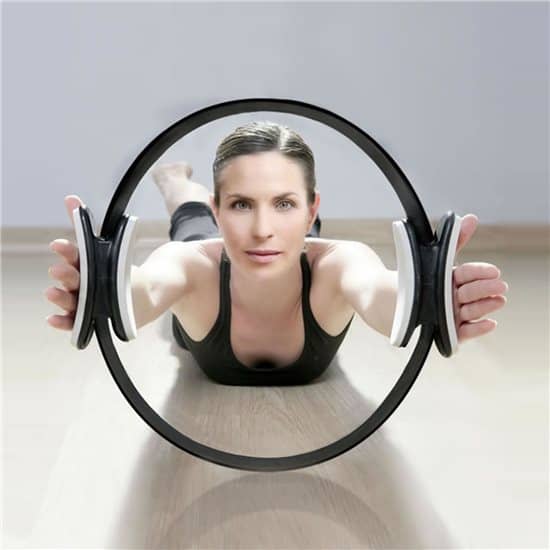
For a similar Pilates gear, consider the Pilates resistance ring, available at Physioroom. It’s a versatile tool, combining resistance and flexibility training. Using one allows for a dynamic and engaging mind-body practice.
Preparing for Your Pilates Bar Workout
Like any workout routine, including using bands for exercise, safety is paramount. Consult a healthcare professional, especially if you have post-injury, before getting started.
Additionally, don’t overlook the value of a thorough warm-up. For one, it readies your muscles for the demands ahead, minimising the risk of injuries.
When selecting a Pilates bar workout, tailor your choice to your fitness level. Beginners may opt for a resistance band bar for gentle yet effective resistance. Meanwhile, those seeking more advanced training might explore the reformer bar. Finding the right Pilates bar ensures it aligns with your capabilities and goals.
Pilates Bar Exercises for Beginners
Here are some beginner-friendly exercises that harness the power of this versatile tool.
1. Chest press
- Sit on the Pilates yoga mat with legs extended, holding the Pilates bar at chest height.
- Inhale as you push the bar away, extending your arms. Exhale to return to the starting position.
- Maintain a stable core and controlled movements throughout. Avoid arching your back or locking your elbows.
2. Leg press
- Lie on your back, and knees bent, feet flat on the bar.
- Inhale, push the bar away using your heels, straightening your legs. Exhale, return to the starting position.
- Focus on engaging your glutes and hamstrings. Avoid overextending or locking your knees.
3. Bicep curl
- Stand upright, holding the bar with an underhand grip.
- Inhale, curl the bar towards your shoulders, contracting your biceps. Exhale, lower the bar.
- Keep your elbows close to your body and maintain steady, controlled motions. Avoid using momentum.
4. Shoulder raise
- Sit tall, legs extended, holding the bar in front of you at hip height.
- Inhale, raise the bar overhead. Exhale, lower it back down.
- Ensure your shoulders are relaxed and away from your ears. Avoid hunching or straining your neck.
5. Squat
- Stand with feet hip-width apart, the bar resting on your shoulders behind your neck.
- Inhale, bend your knees and hips to lower into a squat. Exhale, return to the standing position.
- Keep your chest lifted, back straight, and knees aligned with your toes. Avoid letting your knees collapse inward.
Remember to maintain a steady breath throughout each exercise. Inhale during the easier phase and exhale during the more challenging phase. Focus on proper form, engaging your core, and performing each movement with control.
Maximising Your Pilates Bar Experience
Maintaining perfect posture and alignment is non-negotiable during your Pilates bar session. It ensures effective muscle engagement and minimises the risk of strain or injury.
Mindfulness and concentration are also integral elements of Pilates. Focusing your mind on each movement cultivates a profound mind-body connection. This enhances the benefits of every exercise and fosters holistic well-being.
Remember, results blossom from consistency. Regular Pilates bar practice hones your skills and refines your strength and flexibility.
Make sure to equip yourself with a thick exercise mat on this journey! Utilising a foam Pilates roller post-session offers myofascial release. It aids in muscle recovery and reduces tension. Alternatively, use a yoga wheel for muscle recovery, anti-stiffness, and overall relaxation.
What you should read next: How to Use Kettlebells?


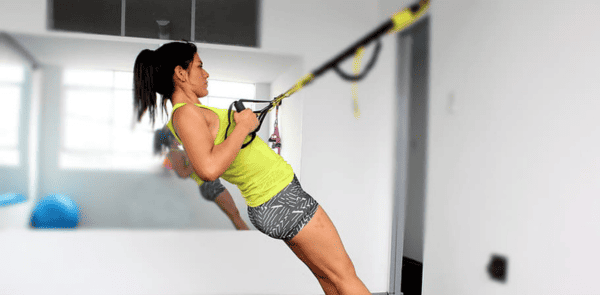
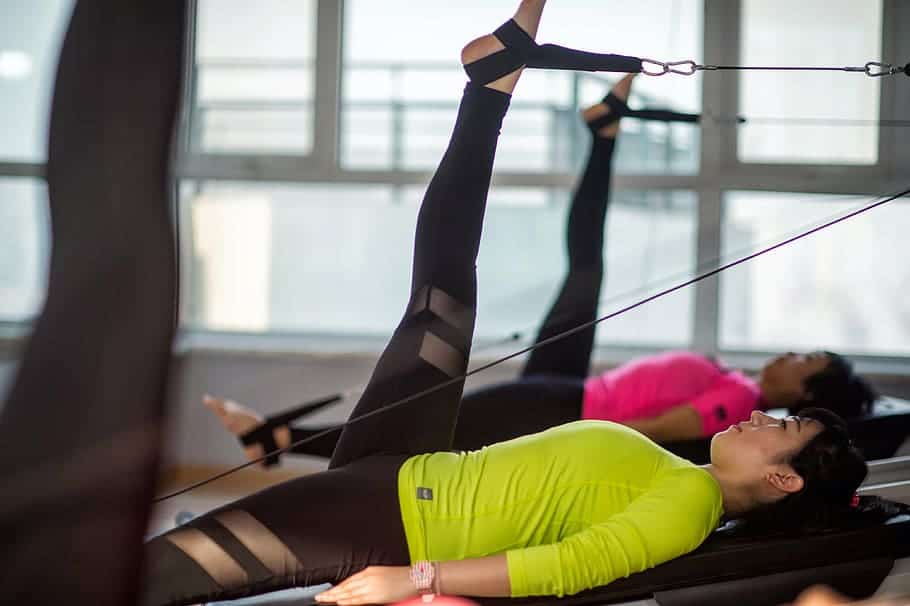 (
(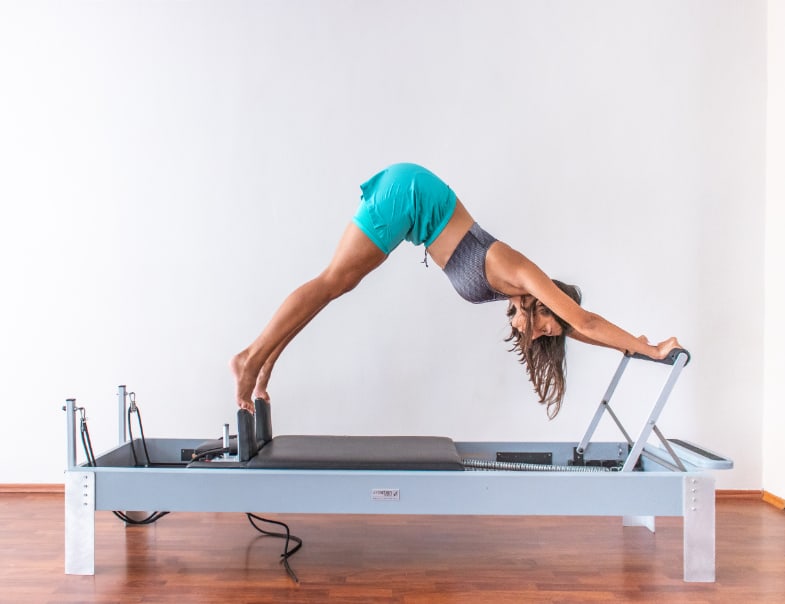 (
(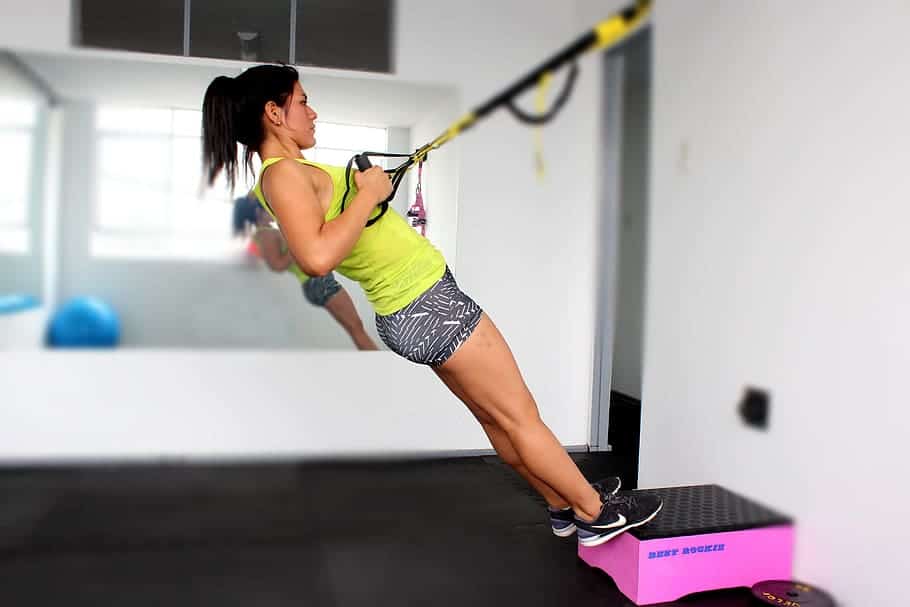 (
(